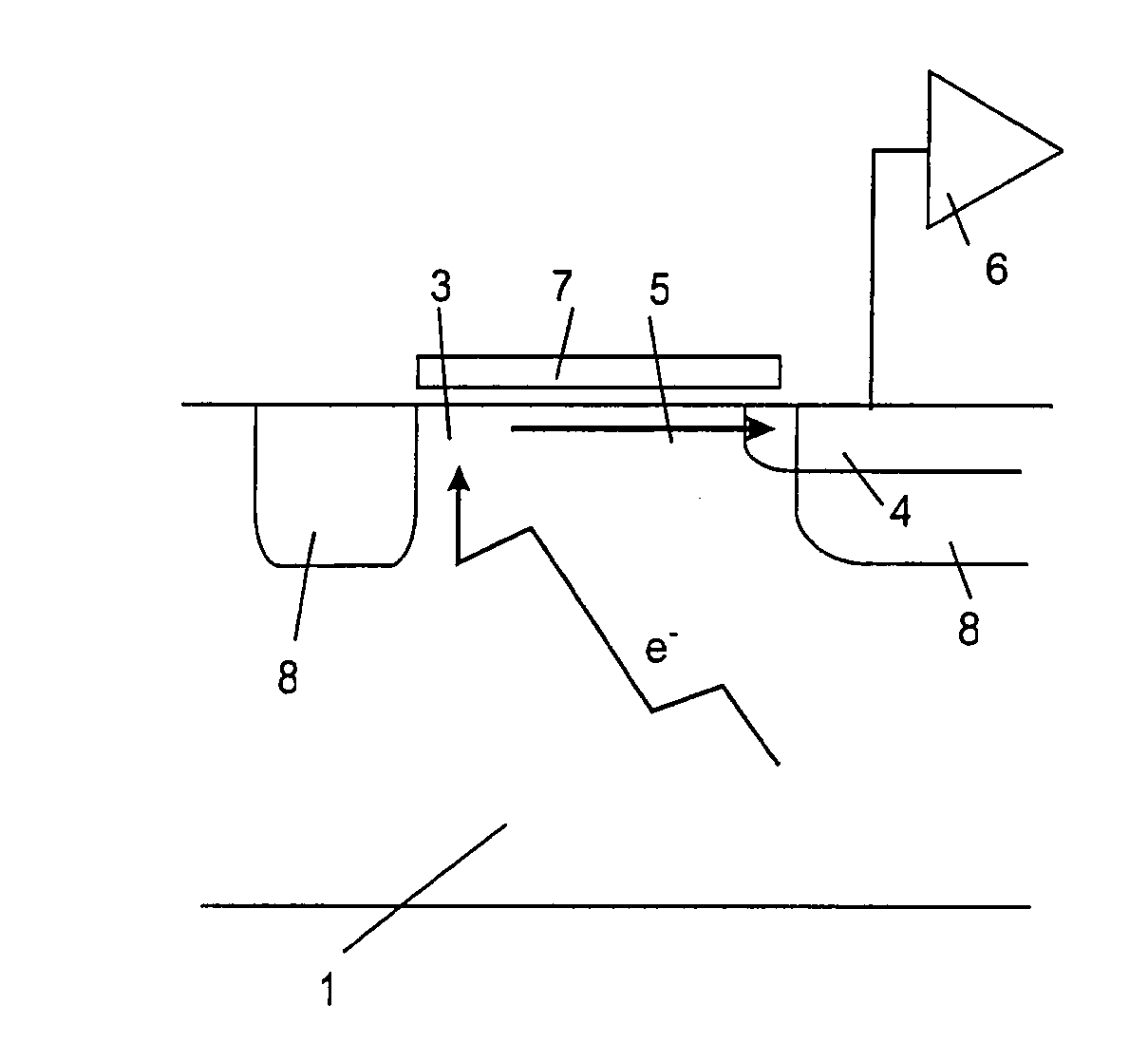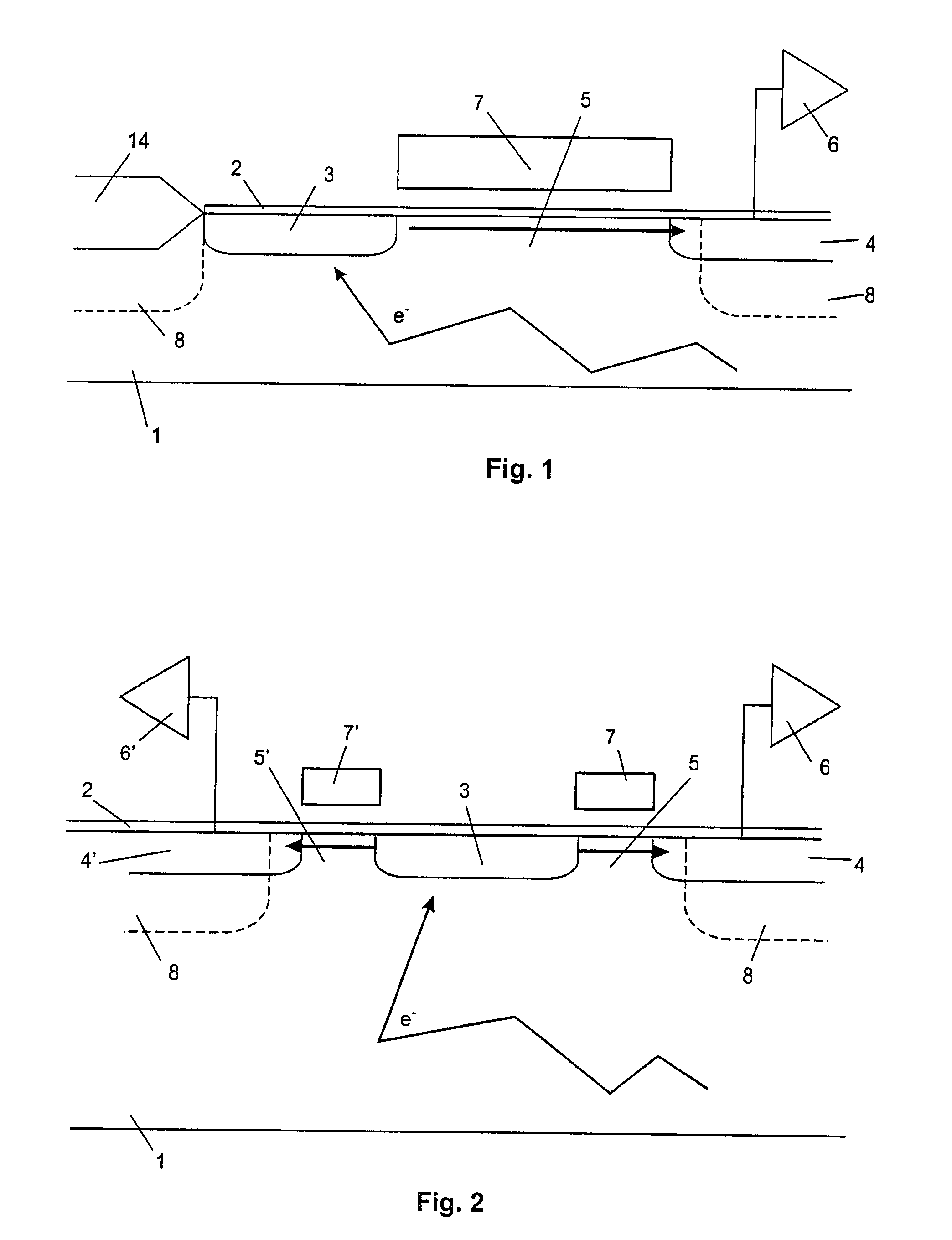Pixel structure with improved charge transfer
a charge transfer and structure technology, applied in the field of pixel structures, can solve the problems of high noise level of simple passive-pixel cmos imager architecture, and inability to easily handle other analog and digital functions
- Summary
- Abstract
- Description
- Claims
- Application Information
AI Technical Summary
Benefits of technology
Problems solved by technology
Method used
Image
Examples
Embodiment Construction
[0061] Persons skilled in the art will recognise that, in what follows, each part with as conductivity type either n-type or p-type can as well have as conductivity type respectively p-type or n-type, and that there are many values of the concentration densities which are compatible with the present invention. The word “carrier” may represent either “holes” or “electrons”. The carrier collecting region 3 and the doped or inverted region 4 are formed using techniques well understood in the art, such as diffusion and implantation. Similarly, the electrode 7 and the insulation layer 2 are formed in conventional manners.
[0062]FIG. 1 illustrates a first embodiment of a pixel structure of the present invention formed in a semiconductor substrate 1 with dopant of a first conductivity type at a first concentration density. The pixel structure may be used in an active or passive pixel. In the preferred embodiment of FIG. 1, the semiconductor substrate 1 is a p-type silicon substrate. The co...
PUM
 Login to View More
Login to View More Abstract
Description
Claims
Application Information
 Login to View More
Login to View More - R&D
- Intellectual Property
- Life Sciences
- Materials
- Tech Scout
- Unparalleled Data Quality
- Higher Quality Content
- 60% Fewer Hallucinations
Browse by: Latest US Patents, China's latest patents, Technical Efficacy Thesaurus, Application Domain, Technology Topic, Popular Technical Reports.
© 2025 PatSnap. All rights reserved.Legal|Privacy policy|Modern Slavery Act Transparency Statement|Sitemap|About US| Contact US: help@patsnap.com



